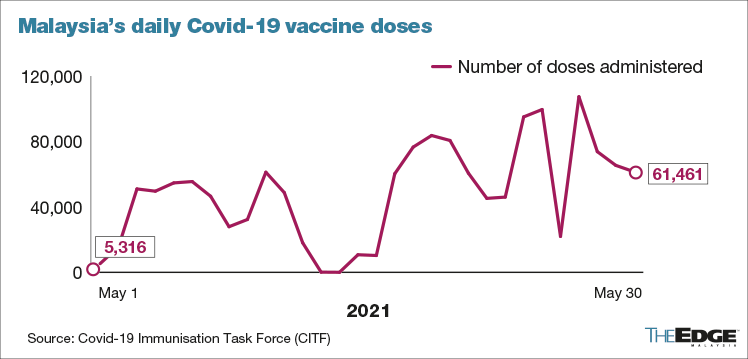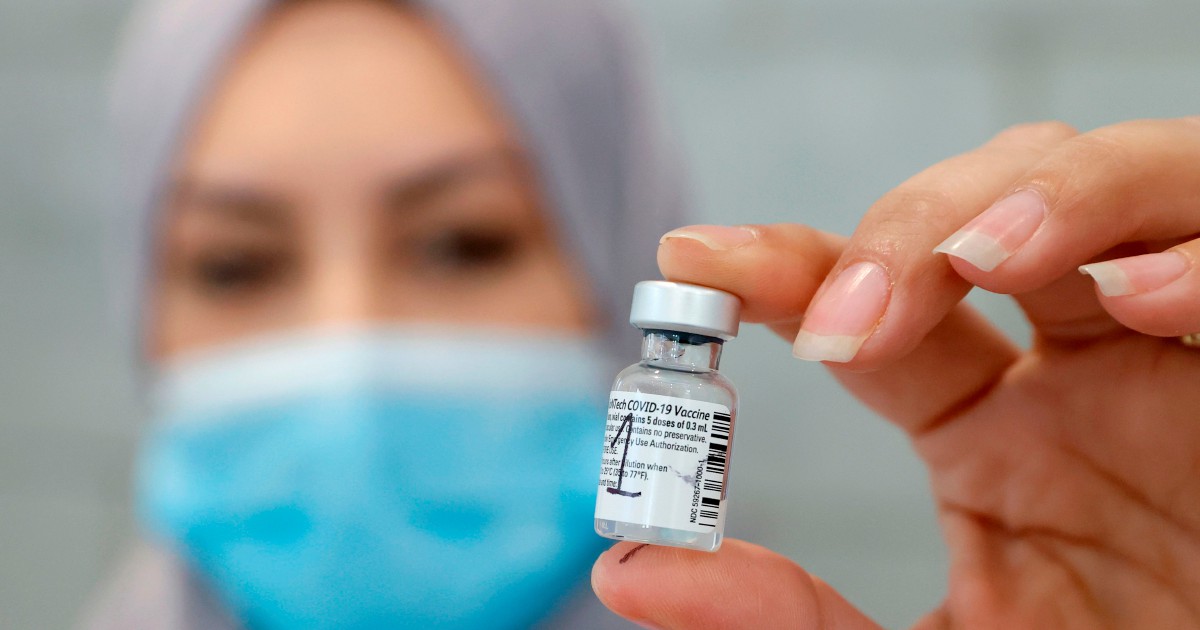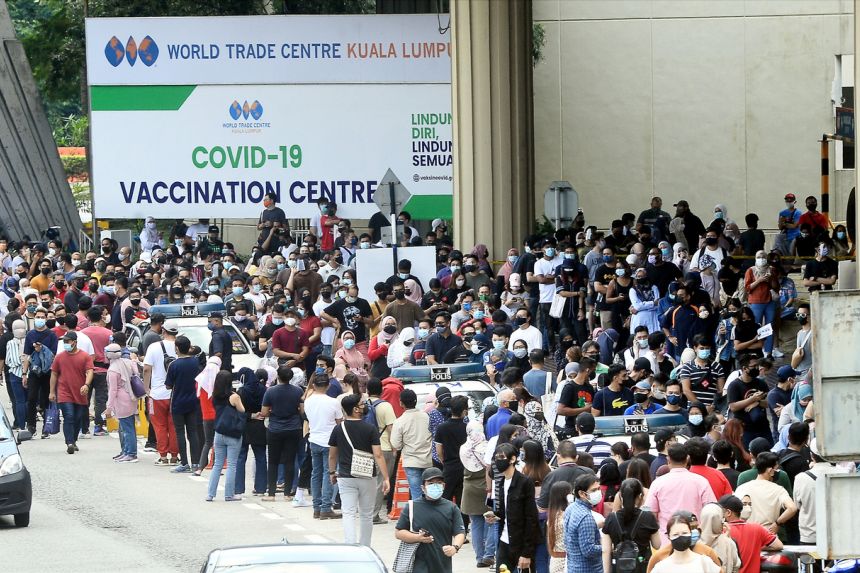It’s getting harder and harder to make any sort of logical case against the Covid-19 vaccines, with new data showing a truly stunning 99.99% level of real-world effectiveness.
The next time your friend says she “heard it from someone” that a person they knew got really sick after getting the vaccine, or the next time you get a TikTok video sent to you showing the supposed “bad effects” of vaccination, you can confidently dismiss it as social media background noise.
Why? Because of a growing body of medical science, hard data, and real-world facts centred around the Covid-19 vaccines.
Even the clinical trial data ushered in a sense of hope and encouragement, with some of the vaccines clocking in with efficacy rates over 90%. Typically, virologists look for 70-75% efficacy, but because Covid-19 was so disruptive and in many cases, so severe, even a 50% efficacy rate would have made the vaccine worth using. So when advanced clinical trials started returning results of 76%, 84%, and even 95% efficacy, there was real reason for hope.

But all those figures were logged in controlled test settings (and each trial was conducted differently in varying countries), and clinical efficacy rates don’t tell the entire story of a vaccine’s real-world effectiveness. The two similar-looking terms are related, but they’re not the same. (See explainer video at the end of this article for full details on this.) So how would the Covid vaccines work in a large population without clinical controls in place?
As it turns out, even better. The real-world data outstrips the clinical trial data by a meaningful margin. Consider the Pfizer vaccine, for example. At a 95% efficacy rate, you would expect 1 person out of 20 vaccinated to still fall ill after exposure to the coronavirus.
The reality is far different. The vaccines are actually much, much better at preventing Covid-19 infections. A growing body of real-world research shows that the vaccines are a jaw-dropping 99% to 99.99% effective in preventing Covid-19 infections. That’s anywhere from 1 in 100 to a vanishingly rare 1 in 10,000 chance of contracting the virus after being vaccinated.
And what’s even more important, perhaps, is that the vaccines reduce the risk of serious illness or death from Covid-19 to virtually zero (less than one occurrence in a million cases). As an added bonus, the vaccines are proving to be very effective at stopping the transmission of the virus, as well, meaning that when a person gets vaccinated, they’re not just protecting themselves, they’re adding to the protection of everyone in the community.
That’s crucial, because the point of a Covid vaccine isn’t to offer 100% across-the-board individual immunity to this virus. It’s to make the virus something we can live with collectively. It’s to make the virus less serious, less deadly. It’s to make the virus unlikely to put anyone in the hospital. And all the Covid-19 vaccines do that. All of them are highly effective against preventing severe illness and death. Every one of the vaccines is a valuable and powerful weapon in the fight against Covid, regardless of the efficacy rates reported in the clinical trials.
There is now simply no fact-based reason to refuse these vaccines. Right now, it’s just a matter of the vaccination rollout effort in Malaysia getting ramped up and made more efficient. The vaccines first began arriving in the country in late February, and critics contend that Malaysia has spent three months not doing enough to get more people vaccinated. It’s unclear where the bottleneck is — either in procurement or other logistics, delivery, or even in people not turning up for their appointments. But clearly, the system is not working as well as it should right now, as less than 6% of Malaysia’s population has even received their first jab. That’s just not going to cut it.

HOW CAN MALAYSIA DO BETTER?
Fortunately, the government appears to be well aware that the vaccination effort needs to be ramped up sooner rather than later. Science Minister Khairy Jamaluddin announced in a virtual news briefing on May 30 that the government will set up another five so-called ‘mega vaccination centres’ around Greater Kuala Lumpur and are considering two more centres in Penang and Johor. Delivery schedules have also been renegotiated to get more vaccines into Malaysia on a faster timetable.
The government will also train general practitioners (GP) to administer Covid-19 vaccines, he said, explaining that some of the Covid vaccines need to be stored and handled differently from typical vaccines.
If you’re wondering why it’s taken three months for Malaysia to only now get around to scaling up the vaccination effort, the minister had an answer ready: “Before this, there was no need [to involve the private healthcare sector] because the vaccine supply was not plentiful. As the supply increases, we want to facilitate private clinics, (GP) clinics, private hospitals to roll out the vaccines via our programme, for free,” he said. Some 1,000 clinics will be designated as vaccine centres by the end of June.
Including this tier of private vaccination centres could add a total of 40,000 doses a day being given, he said, adding that the government aims to raise daily vaccinations to 150,000 doses across all methods. That goal comes on the heels of the entire country administering just 61,461 doses on May 30. Many days in the month of May saw considerably lower vaccination numbers. This simply must change.

Former PM Tun Mahathir has also joined the chorus calling for more vaccination to be done faster, urging the government to stop its monopoly on the import of vaccines and allow registered pharmaceutical companies to import and administer the vaccines.
“There are responsible companies which will not cheat. Records should be kept of course. The important thing is to increase by many times the rate of vaccination,” he said.
The goal of vaccinating 150,000 people per day is certainly a good start, though that would still mean several months to get sufficient levels of immunisation in the population to really disrupt the spread of the virus. Can it be scaled up further, though? Over 78% of Malaysia’s population is urban, which in theory should work to the country’s advantage in a mass vaccination effort. Considering highly urbanised Selangor has for weeks led the surge in new cases, getting a large percentage of Selangor (and KL) residents vaccinated would go a long way towards curbing the spread on a nationwide level.

WHY IS MALAYSIA’S VACCINATION LEVEL SO LOW?
In telecommunications, there is a lot of talk about the ‘last mile’ connectivity issue. That refers to the final short stretch of the network chain that connects the end user to the overall system, and it’s a notoriously challenging problem point. You can get cable television signals to a central urban hub fairly easily. You can connect the Internet to a town’s primary hub. But how do you get those signals the ‘last mile’ to the end user’s home or office? The ‘last mile’ is historically the principal point of bottlenecks, slowdowns, and inefficiencies in the system.
A mass vaccination programme is much the same. It might be relatively straightforward for Malaysia to contract with Pfizer, for example, to order 32 million doses of its vaccine. But there are a lot of complex and demanding logistics involved from the point where the contract is signed and the payment made to the point where the vaccine is being injected into the arms of millions of Malaysian residents. The final bit — the ‘last mile’ of the vaccine chain — is perhaps the most complicated part.
It’s safe to say that Malaysia has never had to undertake an immunisation drive on this scale before in its history. And getting that ‘last mile’ in the vaccination chain sorted out has proven to be more challenging and less efficient in practice than it looked to be on paper back in February when the National Covid-19 Immunisation Programme was announced.
So if they can’t get people to the vaccine in sufficient numbers — and that seems to be one of the problems — then they need to get the vaccine to the people. Mobile vaccination vans, major outreach programmes to rural communities, and a tiered approach (with the federal government handling procurement and organisation, and state- and city-level governments actually getting the vaccine work done), larger and more plentiful vaccine centres, and a public-private coordination effort — all of these things have been implemented in other countries, and evidence strongly suggests that these measures work.
Some countries have even incentivised the vaccine, with so-called ‘vaccine lotteries’ that, while initially criticised by some, have actually proven to be winning, effective ideas, with lucky winners getting cash, full scholarships, and other prizes.

Malaysia, for its part, has chosen to give money to its parliamentary members instead. It’s unclear so far that giving MPs RM20,000 each to “promote” the vaccine will be as effective, and it’s a good bet that such a sum of money (over RM4 million total) could probably have been better spent in the push to get more people vaccinated faster. What if they had taken that money and set a ‘vaccine lottery’ in Malaysia, with one lucky person from the ‘vaccinated resident database’ winning RM150,000 each week for the next six months? Seems like that would seriously drive interest in getting vaccinated, and it would unquestionably cut down on the distressingly large number of no-shows being reported at vaccine centres across the country.
In the end, these near-miraculous vaccines, with their astounding rates of effectiveness, are what will get us out of this destructive, demoralising cycle of MCOs and SOPs and lockdowns and travel bans. The vaccines are what will allow us to reclaim our normal lives and allow us to coexist with the SARS-CoV-2 coronavirus, just as we coexist with the rhinovirus (the common cold) and the influenza virus (the common flu).
The difference is, when it comes to this coronavirus, we have a far better weapon than we’ve ever had in our fight against the common cold or the flu. If we follow the science, the vaccines’ 99.99% effectiveness rate tells us all we need to know. Those are odds I’ll take any day.

To learn more about why efficacy rates are not the most critical measure of a vaccine’s real-world effectiveness, watch this short explainer video from Vox Media:
"ExpatGo welcomes and encourages comments, input, and divergent opinions. However, we kindly request that you use suitable language in your comments, and refrain from any sort of personal attack, hate speech, or disparaging rhetoric. Comments not in line with this are subject to removal from the site. "























